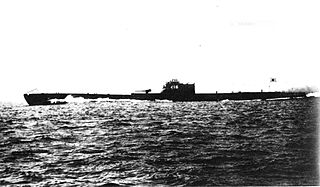Related Research Articles

Guadalcanal is the principal island in Guadalcanal Province of Solomon Islands, located in the southwestern Pacific Ocean, northeast of Australia. It is the largest island in the Solomons by area and the second-largest by population. The island is mainly covered in dense tropical rainforest and has a mountainous hinterland.
Gija, also spelt Gidja and Kija, alternatively known as the Lungga, refers to Aboriginal Australians from the East Kimberley area of Western Australia, about 200 km south of Kununurra. In the late 19th century pastoralists were fiercely resisted by Gija people, many of whom now live around localities such as Halls Creek and Warmun.

USS Trever (DD-339/DMS-16/AG-110) was a Clemson-class destroyer of the United States Navy in commission from 1922 to 1923 and from 1930 to 1945. Converted to a destroyer minesweeper in 1940, she served in the Pacific throughout World War II, including during the Japanese attack on Pearl Harbor, the Guadalcanal campaign, and the New Georgia campaign.

Cosmophasis is a genus of spiders in the family Salticidae. They are predominantly Southeast Asian, while some species occur in Africa and Australia. Although most species more or less mimic ants, there are also colorful species that follow a different strategy.
Luga may refer to:
The family of Northwest Solomonic languages is a branch of the Oceanic languages. It includes the Austronesian languages of Bougainville and Buka in Papua New Guinea, and of Choiseul, New Georgia, and Santa Isabel in Solomon Islands.

Ro-33 was an Imperial Japanese Navy Ro-33-class submarine. Completed and commissioned in November 1935, she served during World War II in the South China Sea, Indian Ocean, and southwestern Pacific Ocean and operated in support of Japanese forces in the invasion of British Malaya, the invasion of Java, the Battle of the Coral Sea, the Guadalcanal campaign, and the New Guinea campaign. She was sunk in August 1942 during her fifth war patrol.
Ro-34 was a Kaichū type submarine of the K6 sub-class built for the Imperial Japanese Navy. Completed and commissioned in May 1937, she served in World War II, operating in the South China Sea and the Netherlands East Indies, off New Guinea, and in the Solomon Islands. She was sunk in April 1943 during her eleventh war patrol.
The second I-24 was one of five Type C cruiser submarines of the C1 sub-class built for the Imperial Japanese Navy. During World War II, she operated as the mother ship for a midget submarine during the attack on Pearl Harbor and the attack on Sydney Harbour, supported Japanese forces during the Battle of the Coral Sea and the Battle of the Santa Cruz Islands, and served in the Guadalcanal campaign, New Guinea campaign, and Aleutian Islands campaign. She was sunk in June 1943.
Burns Creek is a suburb of Honiara, Solomon Islands located to the east of the main center, south of Lungga Point and west of Henderson. It was formed following the tensions over land when displaced Malaitans founded a squatted informal settlement in the late 1990s and early 2000s. The area became known for high levels of unemployment and crime.
Nggeukama is a suburb of Honiara, Solomon Islands and is located West of Lungga Point.
Lungga Point is a suburb of Honiara, Solomon Islands and is located East of the main center and North-West of Honiara International Airport.

Lungga is a suburb of Honiara, Solomon Islands and is located east of the main center on Lungga Point.
Betikama is a suburb of Honiara, Solomon Islands and is located South of Lungga Point.
Lungga Plantation is a suburb of Honiara, Solomon Islands and is located East of Lungga Point.

May Lamok sa Loob ng Kulambo is a 1984 Philippine comedy film directed by, and produced by Hirene Lopez and Danny L. Zialcita as the film's executive producer. The film stars Gloria Diaz, Eddie Garcia, Amy Austria, and Tommy Abuel.

I-75, later I-175, was an Imperial Japanese Navy Kaidai-type cruiser submarine of the KD6B sub-class commissioned in 1938. During World War II, she took part in the attack on Pearl Harbor, the Battle of Midway, the Guadalcanal campaign, the Aleutian Islands campaign, and the Gilbert and Marshall Islands campaign and operated off Australia, before she was sunk in 1944 during her tenth war patrol. She is best known for sinking the United States Navy escort carrier USS Liscome Bay on 24 November 1943.

I-16 was one of five Type C cruiser submarines of the C1 sub-class built for the Imperial Japanese Navy, Commissioned in 1940, she deployed a midget submarine for the attack on Pearl Harbor and for an attack on ships at Diego-Suarez in Madagascar, conducted an anti-shipping patrol in the Indian Ocean, and took part in the Guadalcanal campaign, New Guinea campaign, and Bougainville campaign before she was sunk in May 1944.
I-123, originally named Submarine No. 50 then renamed I-23 from before her construction began until June 1938, was an I-121-class submarine of the Imperial Japanese Navy that served during the Second Sino-Japanese War and World War II. During the latter conflict, she conducted operations in support of the Japanese invasion of the Philippines, the Battle of Midway, the Guadalcanal campaign, and the Battle of the Eastern Solomons. She was sunk in 1942.
The Lungga Power Station is a fossil fuel power station in Guadalcanal Province, Solomon Islands.
References
- ↑ Lungga at Ethnologue (18th ed., 2015) (subscription required)